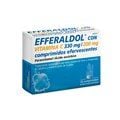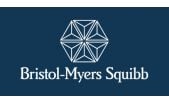Efferaldol (Eferalgan) Vitamin C 20 Effervescent Tablets
This medicine is indicated for the symptomatic treatment of occasional mild or moderate pain, in adults and children from 9 years of age.
This medicine is indicated for the symptomatic treatment of occasional mild or moderate pain, in adults and children from 9 years of age.
Efferaldol With Vitamin C (330 Mg/200 Mg 20 Effervescent Tablets)
Paracetamol/ Ascorbic acid
ACTION AND MECHANISM
Non-opioid analgesic and antipyretic, associated with vitamin C.
Paracetamol peripherally blocks pain impulses through reversible inhibition of cyclooxygenase, an enzyme involved in prostaglandin synthesis. The antipyretic action is due to the inhibition of prostaglandins at the level of the thermoregulatory center located in the hypothalamus. It has shown weak anti-inflammatory properties in some non-rheumatic disorders. In other circumstances, anti-inflammatory action is not to be expected. At the same dose, the analgesic and antipyretic potency of paracetamol is similar to that of acetylsalicylic acid.
INDICATIONS
- [PAIN] of mild or moderate intensity.
- [FEVER].
Alternative to acetylsalicylic acid in peptic ulcer, treatment with oral anticoagulants and allergy to salicylates.
POSOLOGY
- Adults: 1 tablet/4h. It will not exceed 3 g of paracetamol/day (6 doses/day)
A dosage schedule can also be established in adult patients weighing less than 50 kg, patients with mild or moderate liver failure, chronic alcoholism or chronic malnutrition (low hepatic glutathione reserves) and dehydration, it will not exceed 2 g/24 hours.
RULES FOR CORRECT ADMINISTRATION
Dissolve the tablet in half a glass of water, swallowing afterwards.
CONTRAINDICATIONS
- [ALLERGY TO PARACETAMOL].
- [HEPATOPATHY] (with or without liver failure), viral [HEPATITIS]: increases the risk of hepatotoxicity.
PRECAUTIONS
- [CHRONIC ALCOHOLISM]: Chronic consumption of alcoholic beverages (more than 3-4 drinks/day) can enhance the hepatic toxicity of paracetamol. Chronic alcoholics should avoid prolonged treatment or excessive doses of paracetamol (no more than 2 g/day should be administered). An increased incidence of hepatotoxicity and gastrointestinal bleeding has been observed in patients treated with fixed doses of paracetamol plus aspirin.
- [ANEMIA]: due to the possible appearance of blood disorders such as thrombocytopenia, leukopenia, agranulocytosis, hemolytic anemia, etc., caution is recommended in patients with anemia, avoiding prolonged treatments. In these patients there is a risk that cyanosis may not manifest despite elevated methemoglobin concentrations.
Prolonged treatments should also be avoided in patients with cardiac or pulmonary disorders.
- [GLUCOSE 6 PHOSPHATE DEHYDROGENASE DEFICIT ANEMIA]: cases of hemolysis have been observed.
- Severe renal insufficiency with creatinine clearance less than 10 ml/min, the interval between two doses will be at least 8 hours. In patients with severe or moderate renal insufficiency there may be accumulation of conjugated paracetamol derivatives. Prolonged treatments with high doses increase the risk of renal toxicity.
- [ALLERGY TO SALICYLATES]: paracetamol as an analgesic and antipyretic is a very valid alternative in patients allergic to salicylate. However, bronchospastic reactions have been observed in some asthmatic patients hypersensitive to acetylsalicylic acid or other NSAIDs. Although the incidence of cross-reaction is low (less than 5%), clinical monitoring is recommended in patients allergic to salicylates treated with paracetamol.
- [KIDNEY STONES] and history of kidney stones. Ascorbic acid can acidify the urine and precipitate urate crystals, which could trigger the formation of kidney stones. Caution should be exercised in patients suffering from this disease.
PRECAUTIONS RELATED TO EXCIPIENTS
- This medicine contains sorbitol. Patients with hereditary [FRUCTOSE INTOLERANCE] should not take this medicine.
- This medicine contains sodium salts. To know the exact sodium content, it is recommended to review the composition. Oral and parenteral pharmaceutical forms with amounts of sodium greater than 1 mmol (23 mg)/maximum daily dose should be used with caution in patients with [ARTERIAL HYPERTENSION], [KIDNEY INSUFFICIENCY] or with low-sodium diets.
ADVICE TO THE PATIENT
- High doses of paracetamol or prolonged treatments without clinical control can cause liver disorders, especially in patients who regularly consume alcoholic beverages.
- Do not use this medication for more than 10 days in a row without medical supervision. Prolonged treatments or high doses should be taken under the supervision of a doctor.
- Do not exceed the recommended daily dose (maximum 4 g/day; 2 g/day in alcoholics).
- Do not use paracetamol together with anti-inflammatories (NSAIDs) without medical consent.
- Phenacetin (paracetamol metabolite) can darken urine.
SPECIAL WARNINGS
- During prolonged treatments it is advisable to carry out regular checks of liver function and complete blood count.
- Although it does not considerably reduce inflammation, very positive effects have been obtained in arthritic processes of the knee, probably due to its analgesic effect.
- Food delays the absorption of paracetamol.
INTERACTIONS
Paracetamol is metabolized in the liver, giving rise to hepatotoxic metabolites, so it can interact with drugs that use the same pathways of metabolism. Thus, there are clinical data on interactions at this level with the following drugs:
- Oral anticoagulants (acenocoumarol, warfarin): possible enhancement of the anticoagulant effect, with apparent little clinical relevance, it is considered the therapeutic alternative to salicylates, when there is anticoagulant therapy. However, the dose and duration of treatment should be as low as possible, with regular monitoring of INR.
- Ethyl alcohol: potentiation of the toxicity of paracetamol, due to the possible induction of hepatic production of hepatotoxic products derived from paracetamol.
- Anticonvulsants (phenytoin, phenobarbital, methylphenobarbital, primidone): decreased bioavailability of paracetamol as well as increased hepatotoxicity in overdose, due to induction of hepatic metabolism.
- Busulfan: as paracetamol can decrease the available glutathione, the clearance of busulfan can be reduced and its organic levels increased. It is recommended to minimize or avoid the administration of paracetamol before (< 72 hours) or during treatment with busulfan.
- Estrogens: decreased plasma levels of paracetamol, with possible inhibition of its effect, due to possible induction of its metabolism.
- Exenatide: the absorption of paracetamol could be reduced by exenatide, as it slows gastric emptying. This interaction can be avoided if the analgesic is administered 1 hour before exenatide.
- Isoniazid: decreased paracetamol clearance, with possible enhancement of its action and/or toxicity, due to inhibition of its hepatic metabolism.
- Lamotrigine: decreased area under the curve (20%) and half-life (15%) of lamotrigine, with possible inhibition of its effect, due to possible induction of its hepatic metabolism.
- Propranolol: increased plasma levels of paracetamol, due to possible inhibition of its hepatic metabolism.
- Rifampicin: increased paracetamol clearance due to possible induction of its hepatic metabolism.
In addition, there are clinical data of interactions with other mechanisms:
- Anticholinergics (glycopyrronium, propantheline): decrease in the absorption of paracetamol, with possible inhibition of its effect, due to the decrease in gastric emptying speed.
- Ion exchange resins (cholestyramine): decreased absorption of paracetamol, with possible inhibition of its effect, due to fixation of paracetamol in the intestine.
- Drugs that predispose to nephrolithiasis (acetazolamide, calcium salts, saquinavir, topiramate, triamterene). Co-administration could lead to an increased incidence of nephrolithiasis. It is recommended to avoid the association.
PREGNANCY
- Paracetamol: the use of short-term therapeutic oral doses is generally accepted in all stages of pregnancy.
- Ascorbic acid: accepted use at low doses (Caution at high doses).
LACTATION
Paracetamol is excreted in breast milk in low concentrations. No adverse effects have been reported in the newborn after oral maternal administration, except for an isolated case of an infant with a reversible maculopapular rash on the upper trunk and face.
The safety and efficacy of high-dose vitamin C supplementation in nursing mothers have not been evaluated.
ADVERSE REACTIONS
"RAM RELATED TO PARACETAMOL"
- Blood: exceptionally, blood disorders, such as [THROMBOCYTOPENIA], [LEUKOPENIA], [PANCITOPENIA], [NEUTROPENIA], [AGRANULOCITOSIS] and [HEMOLYTIC ANEMIA] (in patients with G6PD deficiency).
- Dermatological: [SKIN ERUPTIONS], [URTICARIA], [ALLERGIC CONTACT DERMATITIS], [FEVER].
- Endocrine/Metabolic: exceptionally, [HYPOGLYCEMIA], especially in children.
- Hepatobiliary: rarely, [JAUNDICE], [INCREASE IN TRANSAMINASE], [HEPATOTOXICITY] (associated with cases of overdose, either due to the intake of 1 toxic dose or several intakes of excessive doses).
- Genitourinary: can cause [NEFROPATIA] which in turn can evolve into a picture of kidney failure, [PIURIA] sterile (cloudy urine), renal adverse effects (with high doses).
- Cardiovascular: rarely, [HYPOTENSION].
"RAM RELATED TO ASCORBIC ACID"
It does not usually present adverse reactions, except in especially sensitive individuals.
- Digestive. The most common symptom is the appearance of [DIARRHEA], although it usually occurs especially at high doses, greater than 1 g for adults and 500 mg in children. This diarrhea could be due to the osmotic effects of ascorbic acid in the intestinal lumen. [NAUSEAS], [VOMITING], [GASTRIC HYPERACIDITY], [ABDOMINAL SPASM] and [FLATULENCE] have also been presented, but they usually appear at doses greater than 1 g.
- Genitourinary. The administration of large amounts of vitamin C has been associated with the production of [KIDNEY STONES], although these have only appeared in individuals with a history of kidney stones.
- Hematology. Cases of [HEMOLYTIC ANEMIA] have been described in patients with glucose-6-phosphate-dehydrogenase deficiency, especially in neonates.
Leaflet Efferaldol (Eferalgan) Vitamin C 20 Effervescent Tablets



